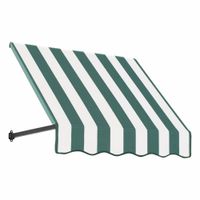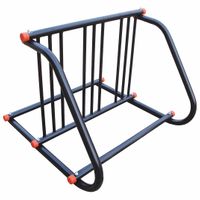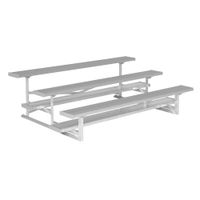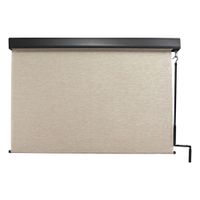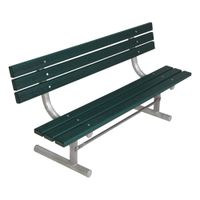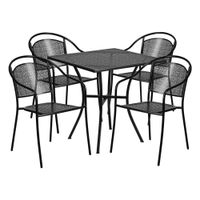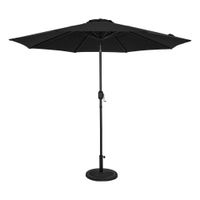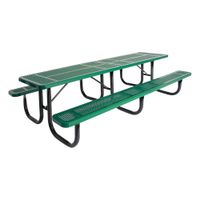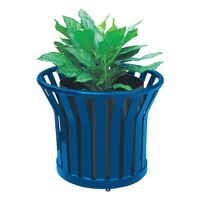Call +(254) 703 030 000 / 751 483 999 / 721 704 777
- Home
- Furnishings Appliances Hospitality
- Outdoor Furniture
Frequently Asked Questions
What materials are best for durable outdoor furniture?
For durable outdoor furniture, consider materials like powder-coated aluminum, which is rust-resistant and lightweight. Teak wood is another excellent choice, known for its natural oils that make it resistant to rot, pests, and weathering, developing a beautiful silver-gray patina over time. High-density polyethylene (HDPE) lumber, made from recycled plastics, is incredibly resilient, requiring virtually no maintenance and resisting fading, cracking, and splintering. Wrought iron, while heavy, offers classic aesthetics and exceptional strength, though it benefits from proper finishes to prevent rust. Stainless steel provides a modern look and good corrosion resistance, especially marine-grade options. Finally, synthetic wickers, often made from UV-resistant polyethylene, offer the look of natural wicker without the vulnerability to the elements. The "best" material often depends on your climate, desired aesthetic, and maintenance preferences.
How do I protect outdoor furniture from sun damage?
Please tell me what topic you would like me to elaborate on.
What are the benefits of using picnic tables in outdoor spaces?
Picnic tables enhance outdoor spaces by providing a dedicated area for dining and socializing, fostering a sense of community and encouraging outdoor activities. Their durable construction, often from wood or recycled materials, makes them resistant to weather and heavy use, ensuring longevity with minimal maintenance. Picnic tables are versatile, serving not only as dining surfaces but also for games, work, or relaxation. They are also cost-effective and easy to install, making them a practical choice for parks, gardens, and commercial outdoor areas.
How can I secure my bike with a bike rack?
To secure your bike with a bike rack, consider these steps:1. **Choose the Right Rack:** Different racks (roof, hitch, trunk) offer varying levels of security. Hitch and roof racks often provide more integrated locking mechanisms.
2. **Use Integrated Locks:** Many modern bike racks come with built-in cable or arm locks that secure the bike frame to the rack. Always use these.
3. **Add a Supplemental Lock:** For enhanced security, use a high-quality U-lock or a heavy-duty chain lock to secure your bike's frame and at least one wheel (preferably both) to the rack itself, or even to the vehicle's frame if possible.
4. **Lock Wheels Separately (Optional but Recommended):** Wheels are often easily removable. If your main lock doesn't secure both wheels, consider using an additional cable lock to secure them to the frame or rack.
5. **Remove Valuables:** Always remove quick-release wheels, seats, lights, bike computers, and any other easily detachable accessories.
6. **Park Smart:** When leaving your vehicle, choose well-lit, visible areas with foot traffic. Avoid isolated spots where thieves can work undisturbed.
7. **Don't Leave it Unattended for Long:** Even with the best locks, a determined thief can eventually overcome them. Minimize the time your bike is left unattended on the rack.
8. **Insure Your Bike:** As a last resort, ensure your bicycle is covered by your home insurance or a dedicated bike insurance policy.Combining multiple locking methods significantly deters theft.
What are the advantages of using bleachers for outdoor events?
Bleachers offer numerous advantages for outdoor events, making them a popular choice for various gatherings. One key benefit is their ability to provide organized, tiered seating, which significantly improves visibility for attendees. This ensures that everyone has a clear view of the event, whether it's a sporting competition, concert, or public speaking engagement.
Another advantage is their versatility and portability. Many bleacher systems are designed to be easily set up, dismantled, and transported, allowing them to be used for temporary events at different locations. This flexibility is particularly useful for event organizers who need adaptable seating solutions.
Furthermore, bleachers are generally durable and weather-resistant, built to withstand outdoor conditions. They can accommodate a large number of people in a relatively compact space, making them an efficient seating solution for maximizing audience capacity. Their robust construction also contributes to safety, providing stable and secure seating for attendees. Finally, bleachers can be a cost-effective seating option compared to other temporary structures, offering a practical and economical solution for events of all sizes.
How do stadium chairs enhance comfort at outdoor events?
Stadium chairs are designed to significantly enhance comfort at outdoor events by addressing common pain points associated with traditional seating options like bleachers or ground seating. Their primary advantage lies in their ergonomic design, which often includes features like backrests and padded seats. These elements provide crucial lumbar support, preventing the discomfort and fatigue that can arise from prolonged sitting on hard, unsupportive surfaces.
Many stadium chairs also come with armrests, which further improve posture and offer a place to rest arms, reducing strain on shoulders and neck. The portability of these chairs is another key comfort factor; attendees can bring their own comfortable seating to a variety of outdoor venues, ensuring a consistent level of comfort regardless of the event's location.
Additionally, some models offer adjustable features, such as recline options or varying seat heights, allowing individuals to customize their seating position for optimal comfort. The materials used are also important, often being durable and weather-resistant while still providing a soft and comfortable surface. Ultimately, by offering support, padding, and personal space, stadium chairs transform the outdoor event experience from a potentially uncomfortable ordeal into a much more enjoyable and relaxed occasion.
What is the best way to clean and maintain patio umbrellas?
Please specify the topic you would like me to elaborate on.
How do exterior sun shades work to reduce heat and glare?
Exterior sun shades effectively reduce heat and glare by intercepting sunlight before it enters a building's interior. Made from various materials like mesh fabrics, aluminum, or wood, these shades are positioned outside windows or on patios. They operate on a few key principles:1. **Solar Heat Gain Reduction:** When sunlight hits a window, it transfers heat into the building. Exterior shades block or reflect a significant portion of this solar radiation, preventing it from ever reaching the glass. This pre-emptive blocking reduces the need for air conditioning, leading to energy savings.
2. **Glare Control:** Direct sunlight can cause uncomfortable glare, making it difficult to see computer screens or read. Shades diffuse or block direct sunlight, creating a more comfortable visual environment without sacrificing natural light.
3. **Daylighting Optimization:** Some shades are designed to still allow natural light to filter through, brightening interiors while mitigating harsh direct rays. This maintains a connection to the outdoors and reduces the need for artificial lighting during the day.
4. **Airflow and Ventilation:** Depending on their design (e.g., perforated screens), some shades can allow for airflow, further contributing to cooling by dissipating heat that might accumulate between the shade and the window.In essence, exterior sun shades act as a protective barrier, managing the amount of solar energy and light that penetrates a space, thus enhancing comfort and energy efficiency.
What are the benefits of using planters for outdoor gardening?
Using planters for outdoor gardening offers numerous advantages. They provide flexibility, allowing you to easily move plants to optimize sunlight exposure or protect them from harsh weather. Planters are ideal for small spaces like balconies or patios, enabling gardening where in-ground planting isn't feasible. They offer better control over soil quality, drainage, and pest management, as you can select the perfect potting mix and isolate plants from ground-dwelling pests. This controlled environment also makes it easier to manage water and nutrient delivery, leading to healthier plants. Additionally, planters add a decorative element to your outdoor space, enhancing its aesthetic appeal with various styles, colors, and materials.
How do awnings protect doorways from weather elements?
Awnings protect doorways from weather elements by providing a physical barrier against rain, snow, sun, and wind. They extend outwards from a building, creating a sheltered space beneath them. This overhead cover prevents rain and snow from directly hitting the doorway, reducing the risk of water damage, slippery surfaces, and drafts. In sunny conditions, awnings offer shade, blocking harmful UV rays and preventing excessive heat buildup, which can fade doors and interiors. They can also deflect strong winds, preventing debris from entering the doorway and reducing wind-driven rain. By mitigating the impact of these elements, awnings help to maintain the structural integrity of the doorway, extend the lifespan of the door and surrounding materials, and provide a more comfortable and safe entry point.
